Everybody knows that pro gamers have lightning-fast reflexes and spend countless hours practicing. But what really separates the elite from everyone else? It’s not just about grinding more games or having expensive gear.
After talking with several competitive players and analyzing pro streaming sessions, I’ve discovered there’s a hidden playbook that truly separates the best from the rest. These aren’t your typical “use this sensitivity” tips – they’re the deep strategies and techniques that create consistent winners.
Visual Settings That Give Unfair Advantages
While amateur players focus on making their games look pretty, pros optimize for competitive edge. In Rainbow Six: Siege, top players actually crank up shadow quality instead of turning it down. Why? Because high-quality shadows reveal enemy positions before the player model becomes visible.
VALORANT pros take this a step further by changing enemy highlight colors to yellow for maximum contrast. This subtle tweak makes targets pop against any background during chaotic firefights.
“When I switched my enemy outlines to yellow-green specifically, my headshot percentage jumped 8% in the next week,” revealed one professional player during a tournament interview. “It’s not about making the game look good – it’s about making enemies impossible to miss.”
The Psychology That Elevates Their Game
While mechanical skill gets all the attention, mental conditioning is what separates consistent pros from talented but inconsistent players. Elite competitors develop specific pre-game rituals that establish baseline focus and calm nerves.
Many pros use conscious mental reframing between rounds. Instead of dwelling on what went wrong, they immediately switch to process-oriented thinking: “What’s the next best play we can make?” This instant reset prevents emotional spiraling that affects decision-making.
Watch top players carefully and you’ll notice physical anchoring cues – a specific breath pattern or touching their mousepad in a certain way before critical moments. These micro-habits trigger focus states that they’ve conditioned through thousands of practice hours.
Hardware Secrets That Make Micro-Improvements
The truth about gaming peripherals? It’s not about having the fanciest gear – it’s about understanding the technical nuances that create micro-advantages.
Monitor refresh rate is significantly more important than resolution. Pros consistently choose 360Hz or newer 480Hz monitors with exclusive G-SYNC/FreeSync disabled for reduced input lag. And they always play in full-screen resolution to maximize responsiveness.
While mouse weight gets attention, switch type matters more for keyboards. Analog switches like those found on the Wooting 80HE allow for subtle movement adjustments when peeking or strafing in shooters – something impossible with standard mechanical keyboards.
Team Communication You’d Never Hear in Ranked
Listen to pro team comms and you’ll notice a stark difference from casual play. Elite squads use standardized map callouts – sometimes with team-unique shorthand – ensuring everyone instantly understands positions without wasted words.
High-level teams also pre-define backup roles. If the in-game leader gets eliminated early, everyone knows exactly who takes over shotcalling duties. This seamless transition prevents the communication breakdown that often happens in amateur teams when the leader goes down.
Most importantly, pros practice “dead comms” – moments of complete silence during executes. This allows everyone to focus on audio cues and prevents information overload during the most crucial moments.
Career Longevity Techniques That Prevent Burnout
The pros who last aren’t just talented – they’re disciplined about practices that casual players ignore. Height-adjustable chairs set precisely to elbow level with monitors at eye height prevent the neck and wrist strain that sidelines many promising players.
Daily mobility routines featuring wrist stretches and shoulder rotations have become mandatory at professional team houses. Elite players also enforce strict interval breaks every 60-90 minutes to prevent focus fatigue.
The statistics are sobering: over 40% of elite esports players report some form of repetitive strain injury by age 25. Teams now employ physiotherapists and implement recovery protocols including physical therapy tools and enforced no-screen time after practice sessions.
The Real Money Comes From Side Hustles
Tournament prize pools make headlines, but sustainable pro careers are built on diversified income streams that casual players rarely see.
Beyond streaming, pros cultivate personal brands through structured content creation: raw review VODs on YouTube, monthly AMAs on Discord/Patreon, and partnership with analytics platforms through affiliate links.
Many pros have learned that selling signature mousepads or crosshair packs provides consistent revenue that tournament winnings can’t match. Some even host structured training sessions for aspiring players – charging premium rates for direct access to their expertise.
Advanced stat tracking and gameplay analysis tools have become essential for both performance improvement and content creation. Many pros use services like Battlelog.co’s official website to track their development metrics and create compelling content for their followers.
Training Regimens That Go Beyond Grinding
The biggest misconception about pro practice? That they simply play more games than everyone else. Elite players structure their days with scientific precision:
- 2-3 hours of individual mechanical training (specialized aim drills, reflex routines)
- 3-4 hours of team scrims with regular VOD review intervals
- 1 hour of opponent analysis and theory crafting
- 30 minutes of dedicated mental reset (meditation, stretching)
Professional training focuses on consistency rather than flashy highlights. They drill fundamentals in ways that casual players find boring – repetitive scenario-based routines like forced 2v1 situations, retake drills, and custom aim maps that isolate specific skills.
“You need to drill radiant-level mechanics with consistency as your goal, not crazy highlight flicks,” explained one VALORANT coach. “Build routines you follow every day, then measure improvement with real metrics – not how good it felt.”
What separates true professionals isn’t just the amount of practice but the quality and structure. They train deliberately with clear objectives rather than mindlessly grinding ranked matches.
The Bottom Line
Becoming elite isn’t just about grinding more hours or buying better equipment. It’s about adopting the hidden practices that pros rarely advertise – from psychological conditioning techniques to structured training regimens and visual optimization tricks.
By implementing these behind-the-scenes strategies, you can accelerate your improvement dramatically. The gap between amateur and professional isn’t just skill – it’s approach. And now you know what truly makes the difference.


